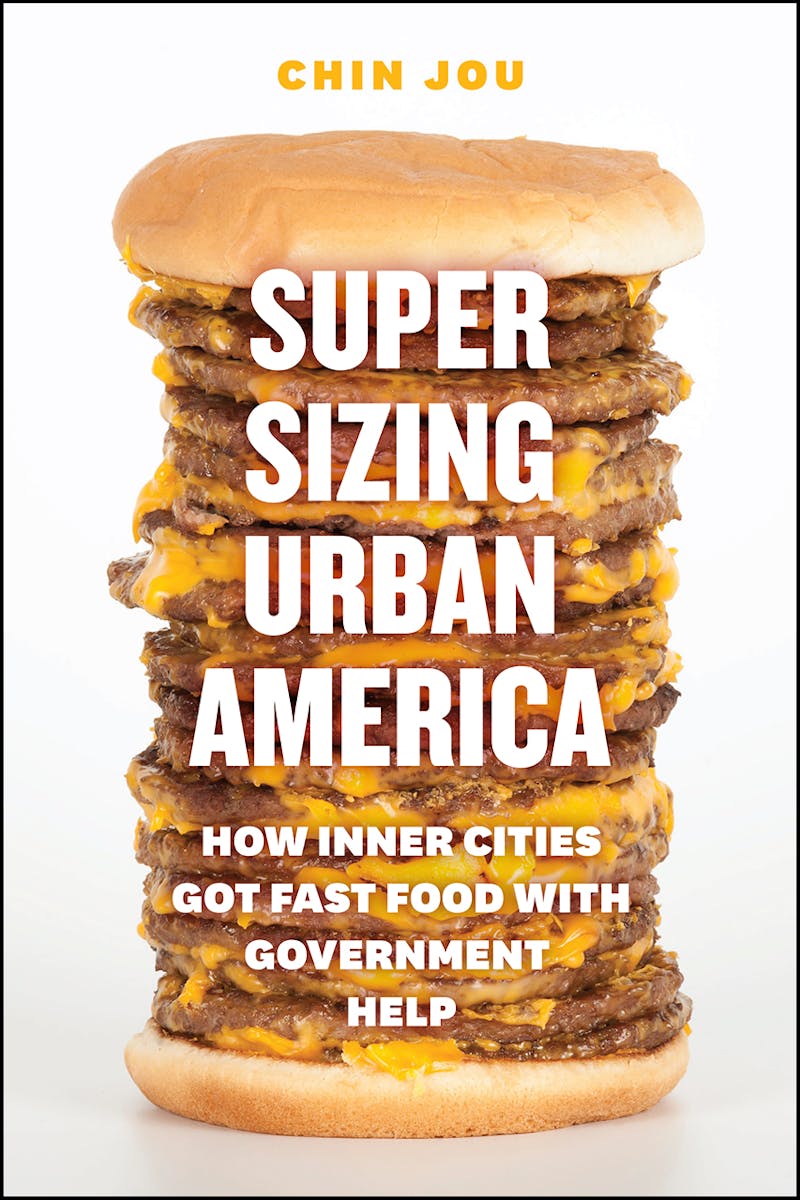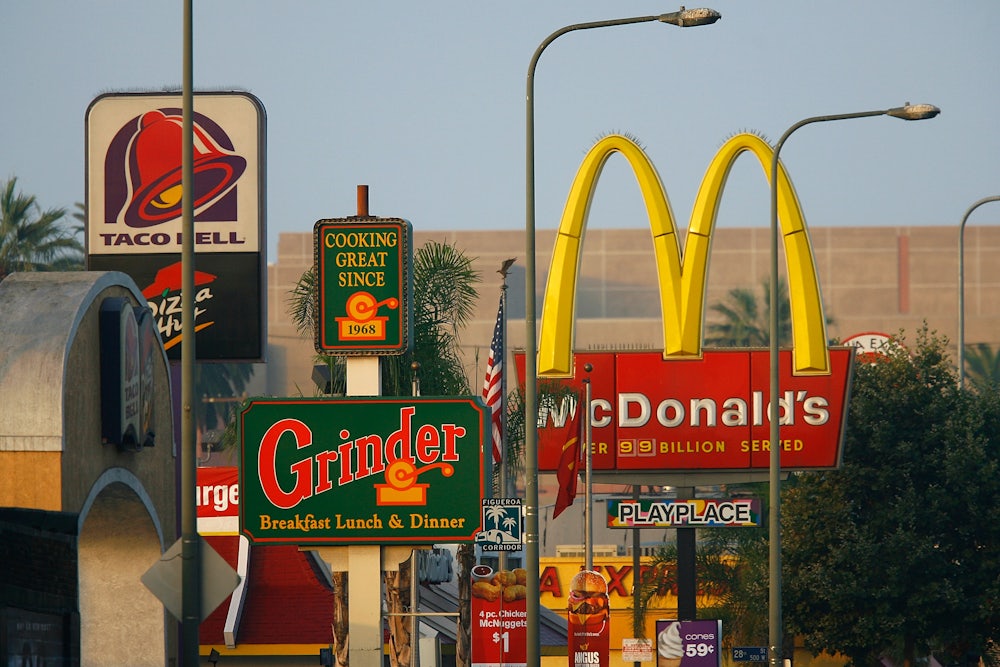When Hurricane Katrina hit New Orleans there was a brief
moment of shocked compassion before racial anxieties flooded the Internet.
Victims of the disaster were quickly recast as looters, criminals, and
layabouts. They were government “dependents” seeking even more entitlements now
that they were bona fide survivors. Some of these hideous opinions drew on the
physical “evidence” of the bad character of hurricane survivors: their size.
The mostly black bodies crowding the Superdome, getting on rafts, and being
carried away by helicopters, were too large for online critics. Obesity, while
common in the U.S. and over-represented in the South, was conflated with
blackness. Black bodies fleeing New Orleans were not only linked to historic
stereotypes of menace and criminality but also slothfulness, helplessness, and
a tropical torpidity unwelcome in hard-working America.

African Americans are more likely to be obese in the United States than their white counterparts. The same is true for Hispanics. For some conservatives, that may be an indictment. For the rest of us, it is a public health problem. The rise in obesity in the U.S. is an epidemic and much of the root causes lie in poverty, a condition more prevalent in communities of color. In many U.S. cities, bodegas serve dinner in the form of chips and soda to low-income people living nearby who have no access to neighborhood supermarkets. For those without much money or options, fast food can be a blessing: a full meal that is quick and affordable in a safe and predictable setting. Yet, these very meals are one of the country’s biggest public health menaces. Filled with fat and sugar, fast food is contributing greatly to obesity, diabetes, and heart disease.
Supersizing Urban America, a new book by the historian of public health, Chin Jou, shows that fast food did not just find its way to low-income urban areas: It was brought there by the federal government. In the wake of the 1968 riots, Nixon’s law-and-order presidency began programs that doled out federal funds to fast food franchises. The administration asserted that black-owned businesses serving fast food would help to cure urban unrest by promoting an entrepreneurial spirit in poor communities. The federal subsidization of McDonald’s and other chains to enter urban markets previously considered too poor or dangerous was meant to promote “black capitalism.” It did make a select group of black entrepreneurs wealthy, but it was mostly a boon to fast food giants searching for new market demographics.
Like “ethnic” advertising in the alcohol and cigarette industries, fast food companies sold a dream of middle class affluence to communities of color that were nonetheless still excluded from the housing and education that would make those aspirations a reality. Jou’s book shows conclusively that obesity and diet in America have little to do with personal responsibility, and everything to do with public policy.
Large bodies used to be a sign of health and vigor. President Lyndon B. Johnson’s War on Poverty targeted malnutrition and used the emaciated bodies of unemployed Appalachians to illustrate the shame of America’s wealth gap. It was Johnson who in 1964 began the Equal Opportunity Loan program that helped bring fast food to low-income areas. The agenda gained traction after violent unrest broke out in Los Angeles, Newark, and a dozen more cities in the mid-1960s. In the aftermath, Johnson’s administration called for a “Marshall Plan” to revitalize the ghetto. In communities where riots had occurred, only 25 percent of businesses were black owned and most were small. Providing loans to restaurants promoted the wholesome mission of the program, but fast food was also industrialized food. It replaced the soda fountains and greasy spoon neighborhood restaurants of the previous era with streamlined burger assembly lines answering to corporate shareholders.
Nixon, Johnson’s successor, saw in the promotion of black businesses a mixture of markets and morals that fit with his anti-communist agenda and the conservative belief that all the poor need to prosper is uplift. In a position statement released after he created the Office of Minority Business Enterprise in 1969, Nixon stated: “What we need is to get private enterprise into the ghetto, and get the people of the ghetto into private enterprise—not only as workers, but as managers and owners.” The program was allocated $65 million in the first year, although Nixon asked for three times as much, and fast food companies were some of the most eager participants. They used federal money to expand franchises from the white suburbs into low-income black neighborhoods, providing an easily-copied business model and a tested product.
The growth of fast food franchises, like McDonald’s, into black neighborhoods with black owners was a highly visible step taken towards Nixon’s dream of a more robust Black Capitalism. The Small Business Administration (SBA) made thousands of loans in the early 1970s to black entrepreneurs. There were just 405 minority franchises in the United States in 1969. By 1974, there were 2,453. This growth owed not a little to loans from the SBA. McDonald’s went from one minority franchise in 1969 to 10,142 in 1984 (mostly African American).
Just as fast food companies attempted to “modernize” ghetto diets they also wanted to create a new black business class. For the government, this group was important because of their community standing, which could purportedly help to keep order. For fast food companies, the new black bourgeoisie would serve as their community liaisons, often doing business in places where white owners were distrusted. Jou shows that under the guise of community empowerment, federal loan programs may have diversified who accessed capital, but they also redistributed money upward to fast food companies, which grew their businesses while bypassing riskier investments that didn’t involve government support.
The federal loan programs never met their original goal of granting 40 percent of Small Business Administration loans to African Americans. The number never reached more than 23 percent. Yet, this did not stop the gleeful marketing of the program as a means to connect black entrepreneurs with funding. The government saw the franchise system as a form of tutelage in proper capitalist citizenship and did not bother to hide their paternalistic goals. Some participants agreed with them. Brady Keys, a former NFL player and star of the Nixon era program, opened multiple franchises; between 1969 and 1973, he received $9 million in loans. He was grateful for the apprenticeship the scheme gave him. But as Jou makes clear, many black franchise owners did not need this kind of guidance. Some were overqualified, such as Robert Alexander, who operated a Hardee’s in Washington D.C., despite holding a PhD and having previously worked for the CIA under the Ford administration.
The grantees of federal loan programs, Jou shows, were often disappointed by their trajectories after accepting the loans. Many of those who operated McDonald’s and Burger King restaurants complained of racial redlining by the companies, stating that they were expected to operate franchises in black neighborhoods only and were never given locations in more prosperous areas. In this sense, the operators served as a sort of managerial class amongst the marginalized: resenting the white corporate profits from their labor and also seeking to differentiate themselves from poorer residents of color. Jou’s book sadly does not contain enough conversations with these entrepreneurs that would make this relationship clearer. However, one can infer that as middle class blacks took advantage of waning residential segregation to move to suburbs, more privileged entrepreneurs operating businesses in the inner city felt a gap between themselves and their patrons. As inner-city poverty became more concentrated, the gap between black business people and their working class customers grew severely.
One is reminded of the McDowell family in Coming to America, who own a knock-off McDonald’s in Queens and treat their customers and employees with disdain: including Eddie Murphy, a young African prince in disguise. Of course the Shakespearean swapping of class identity in Coming to America is the whole joke: By 1988, when the film came out, there was nothing regal about McDonald’s or, by proxy, McDowell’s. The chain was barely clinging to its middle class image. Jou shows us that as the general public has learned more about eating healthy, fast food has been demonized along with those who eat it. Too often, burgers and fries are not understood as the sustenance of last resort but as a pleasure of the irresponsible and gluttonous.
The Reagan Era antipathy for the poor and shrinking of the social safety net is expressed in elite condescension towards those who eat at fast food restaurants. Fast food is viewed as a matter of taste rather than resources even, sometimes, by public health advocates. As Jou puts it: “Foodie disdain for ‘fast food values’ elides the ways in which historical circumstances, governmental practices, and targeted, relentless food industry advertising helped create and reinforce fast food consumption in America’s low-income urban communities.” In places like the Bronx, where 62 percent of restaurants are fast food and childhood diabetes is skyrocketing, the fast food market was not just created by the appetites of residents but also by the corporate craving to increase market share, even if that means drawing in less affluent consumers.
Supersizing Urban America makes clear that addiction to fast food is not a moral lapse or a brain chemical but the effect of poverty. Jou recognizes that “low wages affect the type of diets households can afford.” She also shows that anti-poverty programs have had ulterior motives, often creating markets for large companies. Politicians like Michael Bloomberg are often fascinated with the ‘bad choices’ of the poor requiring the government to mandate posted calorie-counts, rather than the calculated logic of multinational chain restaurants that keep wages far below the cost of living. Many cities have been more intent on cracking down on the ingredients in Happy Meals rather than raising the hourly wages of those who make them.
Fast food once symbolized middle-class status, prized in neighborhoods where many were just scraping by on public assistance and food stamps. Today, it has become much more identified as the food that people who labor in fast food restaurants eat, as the miserable pay leaves them few other options.
